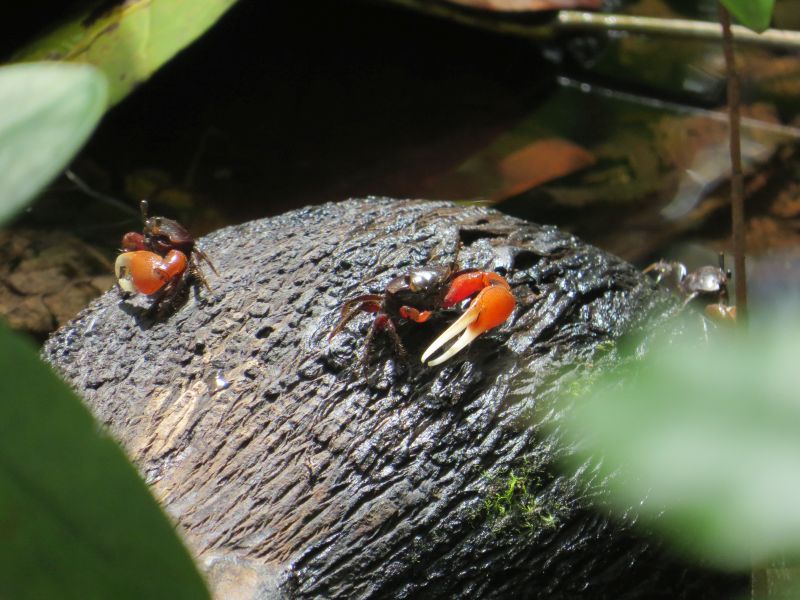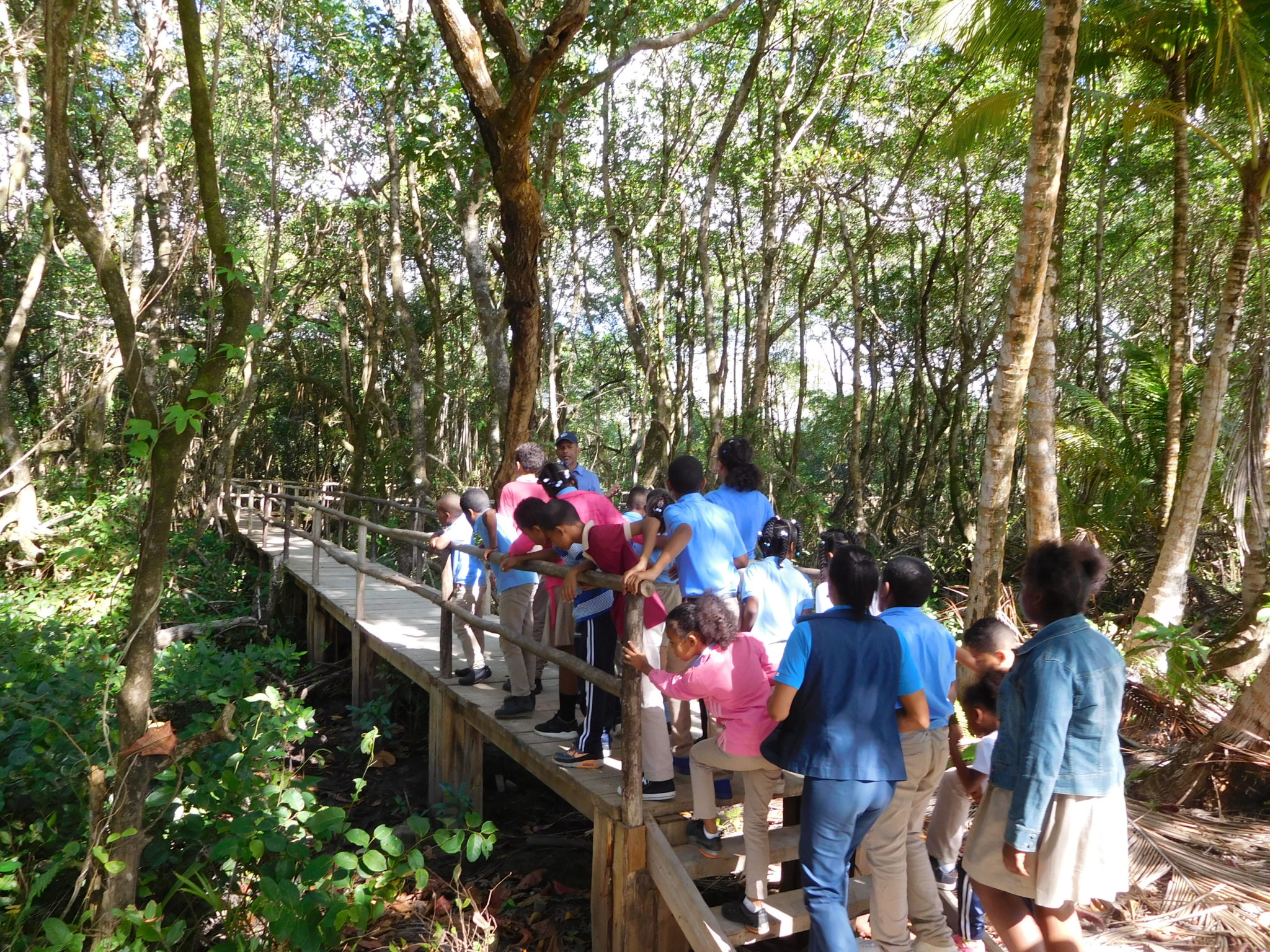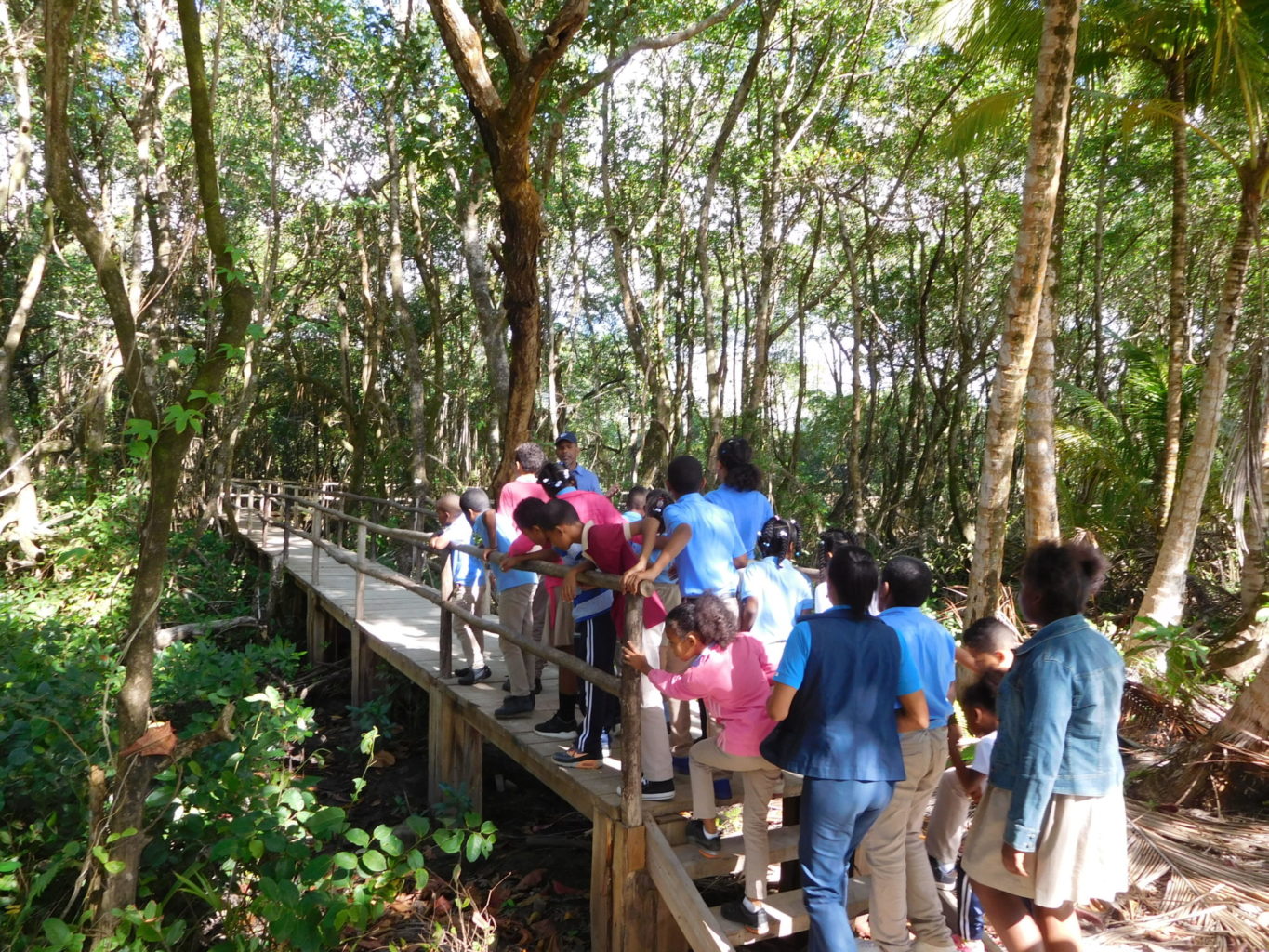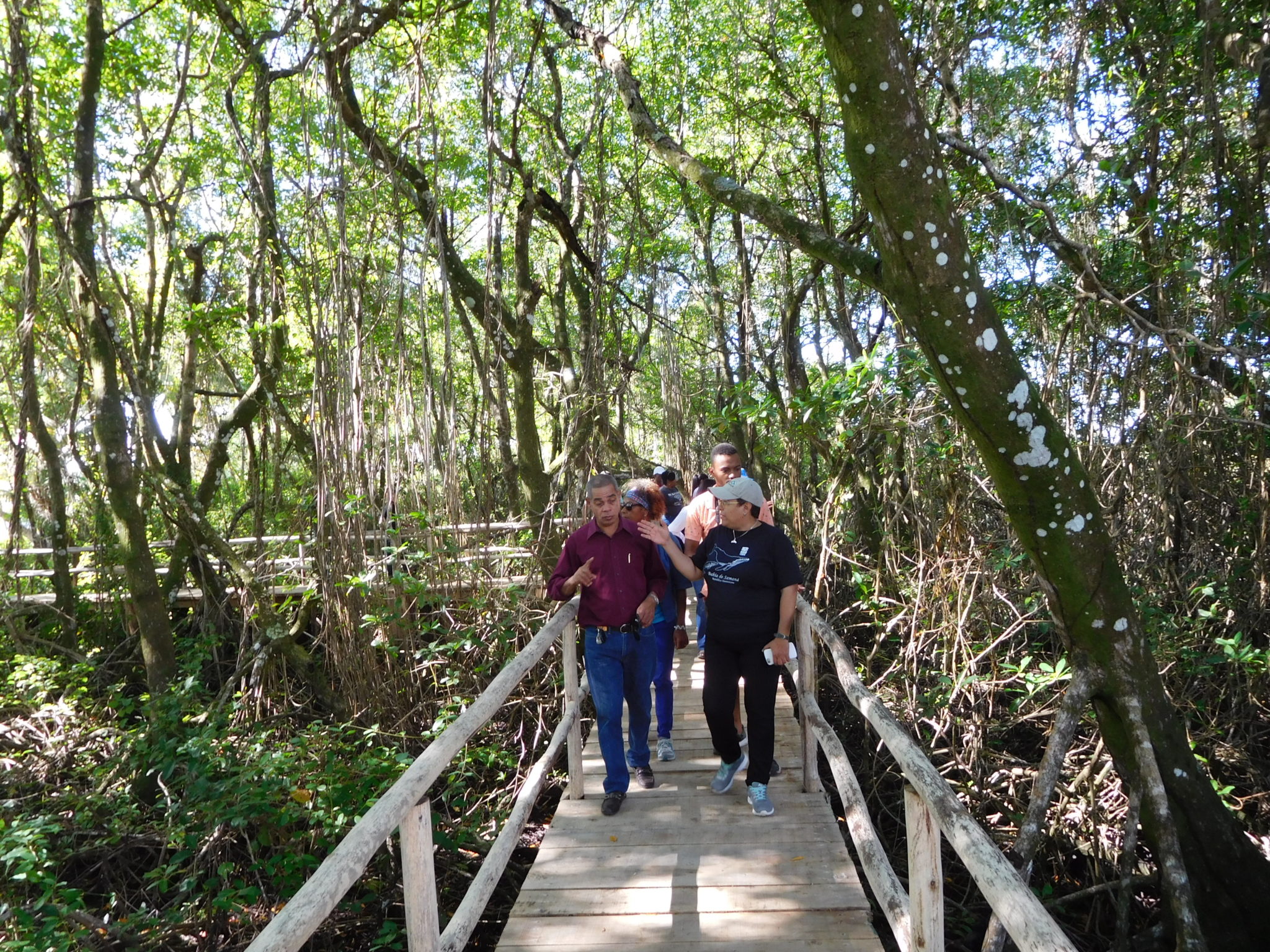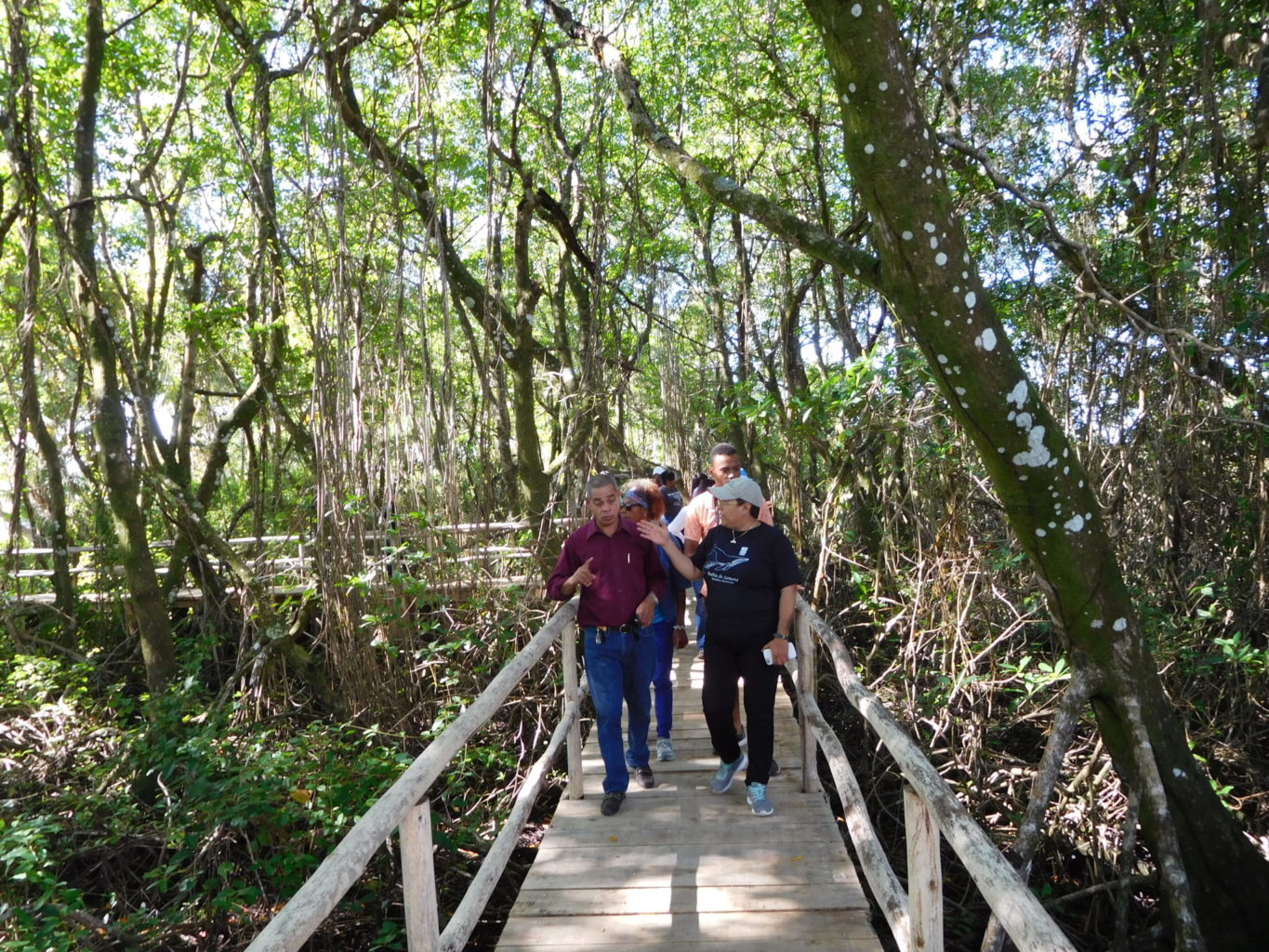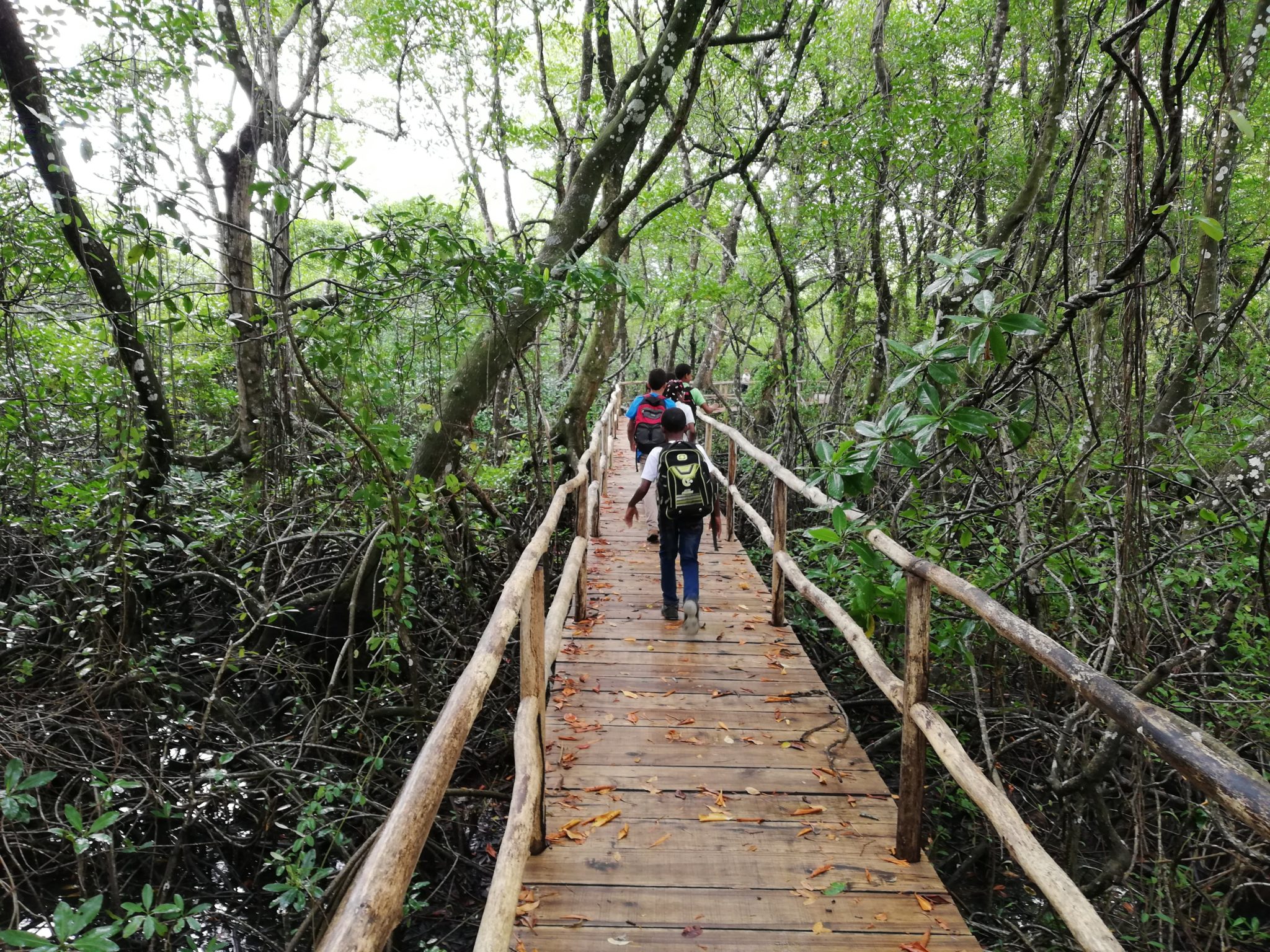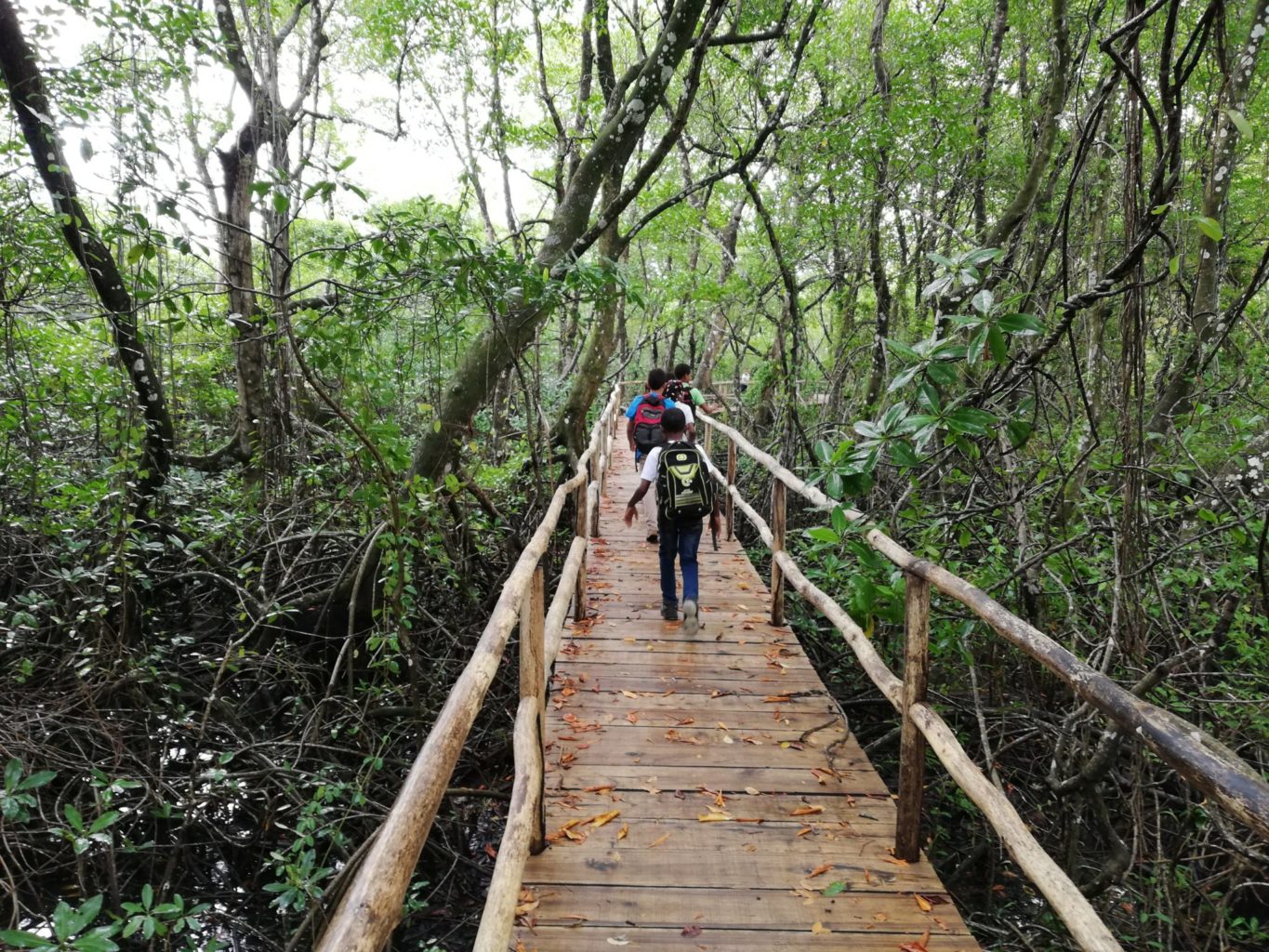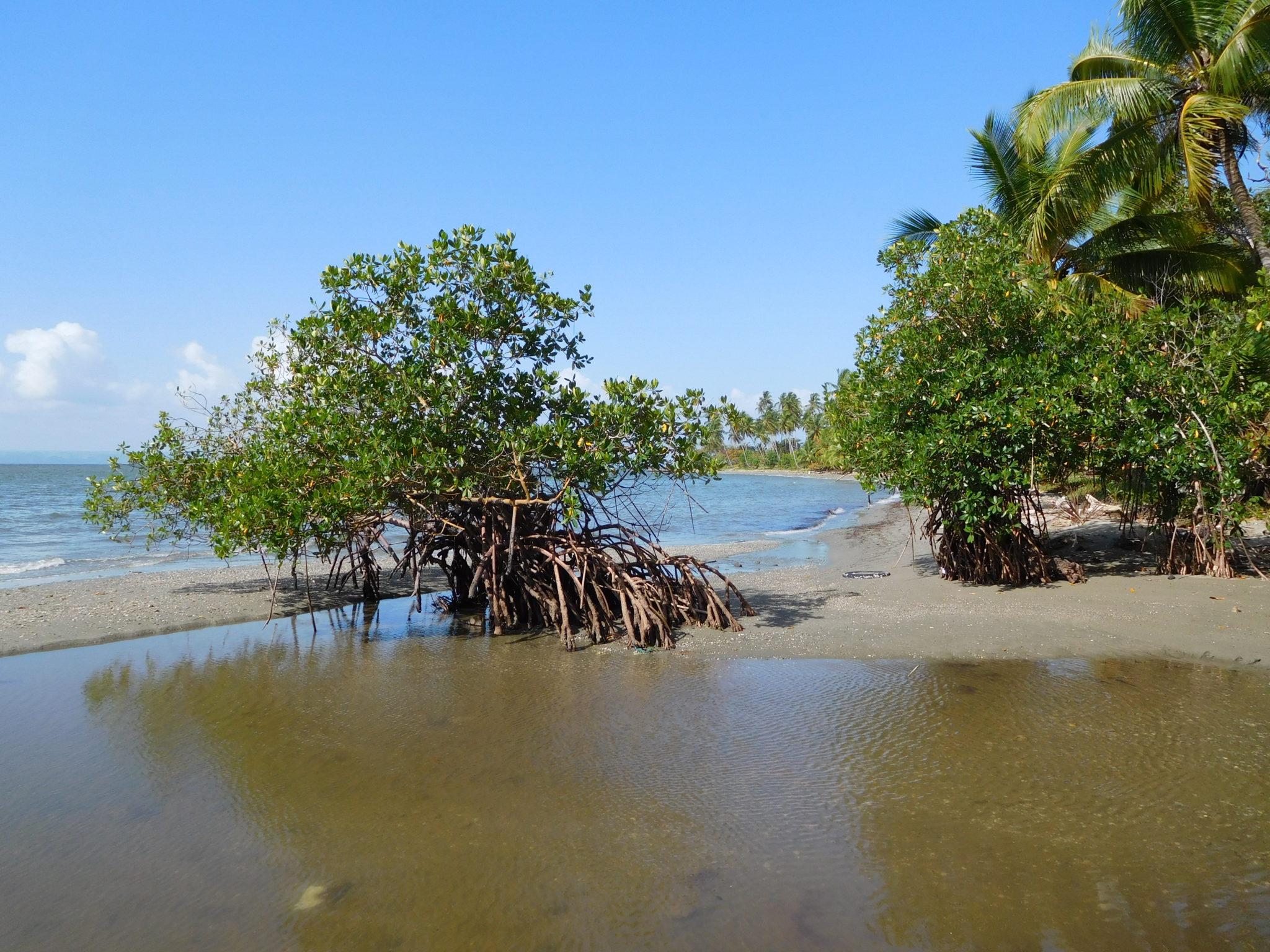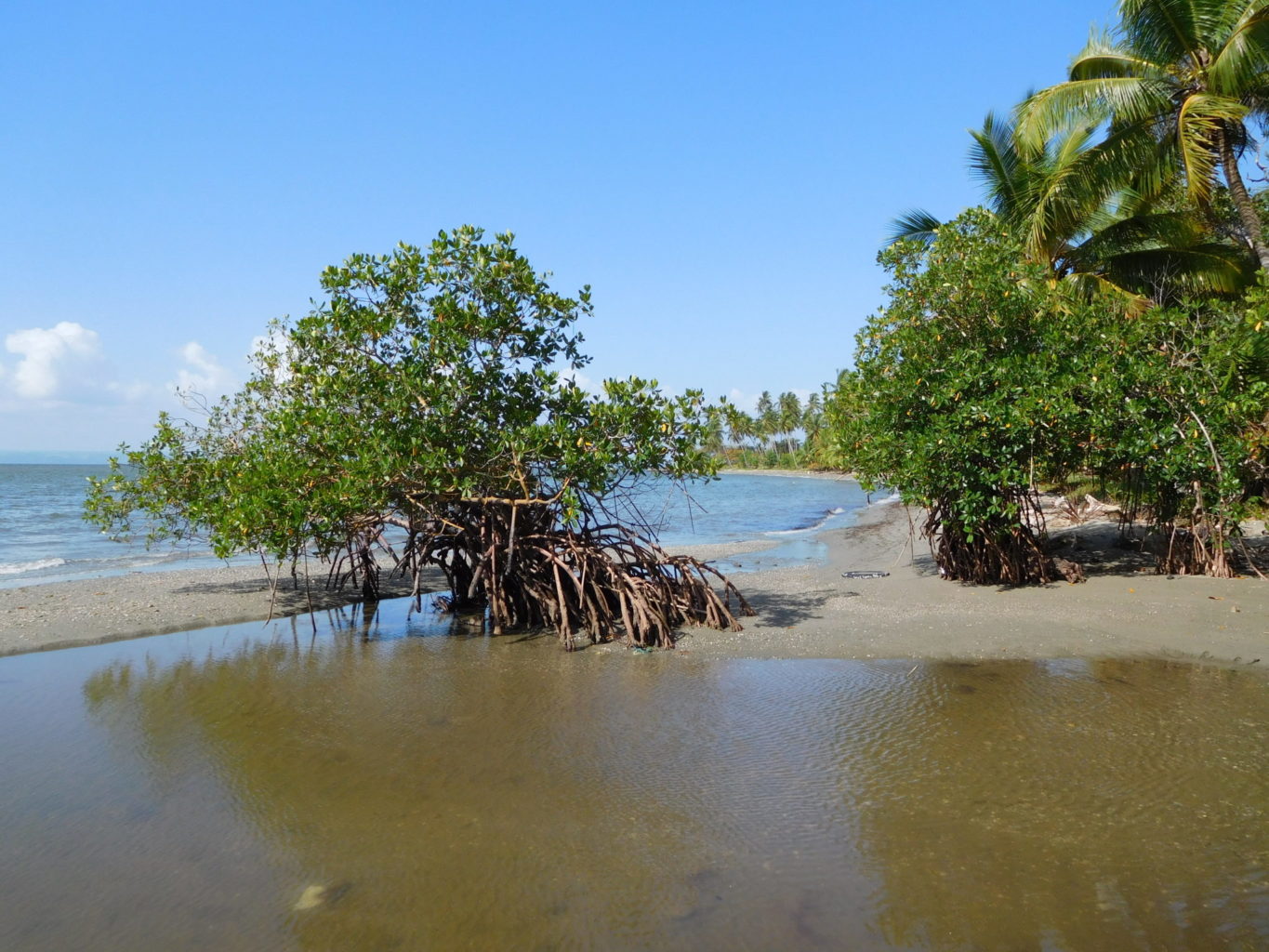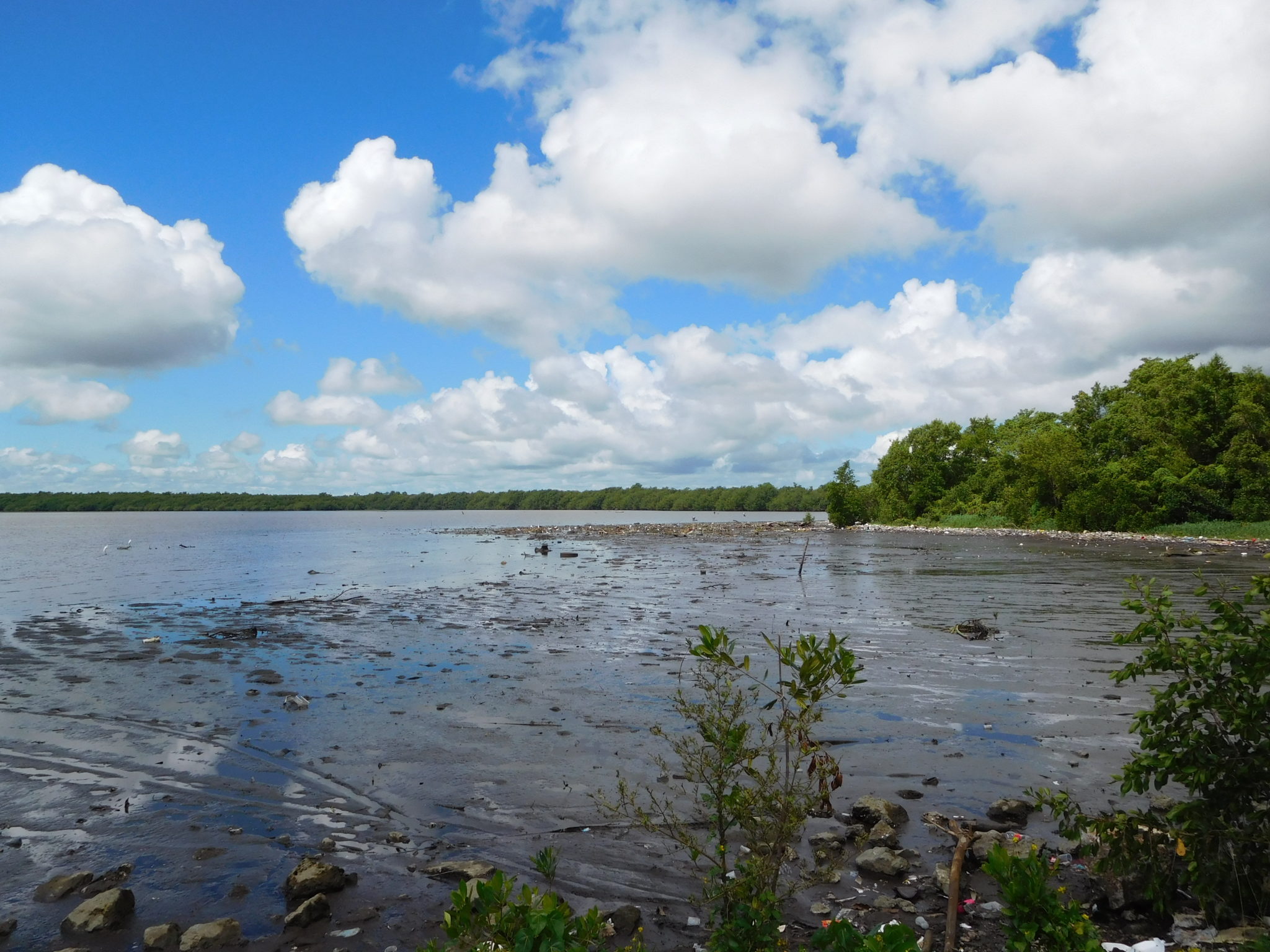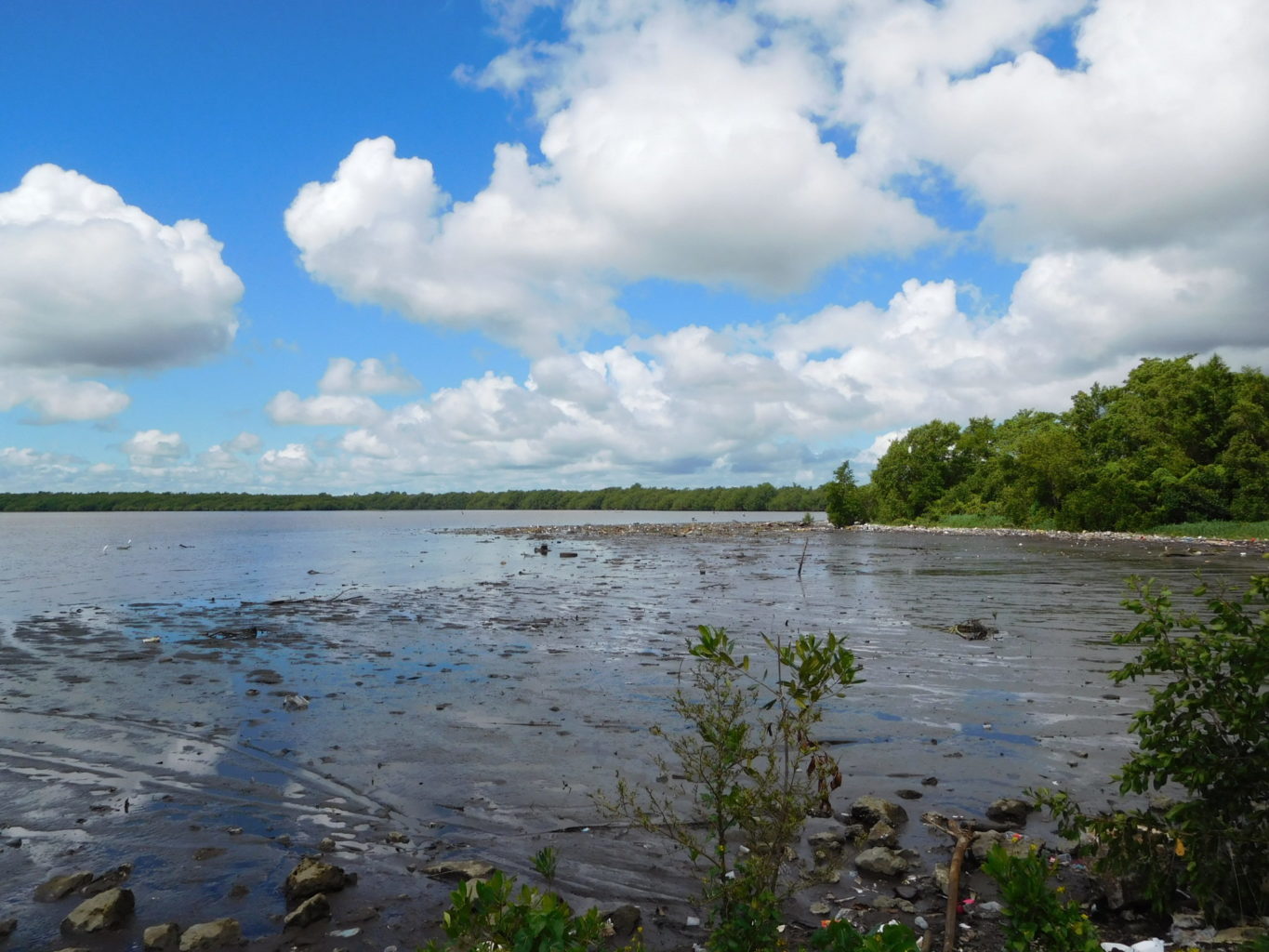Samaná Bay features the largest concentration of mangroves in the the Dominican Republic. In the winter, many humpback whales calve in the bay. Seabirds and wading birds frequent the mangroves, including petrels, brown pelicans, reddish egrets (threatened), snowy plover (near-threatened), tricolored heron, and many more. Tourists also come to see protected caves with pre-Columbian pictographs and petroglyphs.
But along the coastal fringe of Samaná Bay, mangroves are disappearing rapidly. Tourism-based construction, waste from expanding urban settlements, charcoal production, and pesticide and fertilizer runoff all contribute to the damage. With mangroves gone, villages have less protection against wind, waves, and flooding from big storms. Water quality falls, sediment increases, and fish stocks decline. And of course, critical carbon storage is destroyed.
A local nonprofit, the Center for the Conservation and Eco-Development of Samaná Bay and its Surroundings (CEBSE), works to conserve the biodiversity of Samaná Bay. CEBSE staff collaborate with local communities to support sustainable development. With Seacology’s support, CEBSE will build a 1,000-foot boardwalk, with interpretive signs and a bird-watching site, through a 23-acre mangrove area called Pedro Aloida. These mangroves, in the community of Las Garitas, are a remnant of red mangrove and black mangrove forest. The boardwalk will employ youth, and educate local people and visitors about the importance of mangroves. It will also give schoolchildren hands-on learning about coastal ecosystems.


